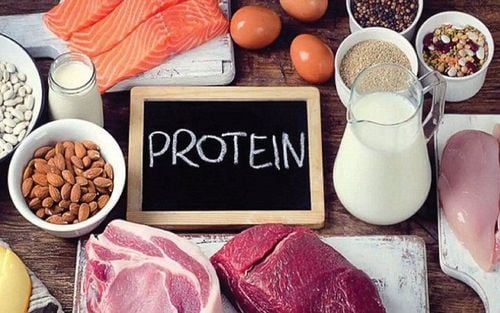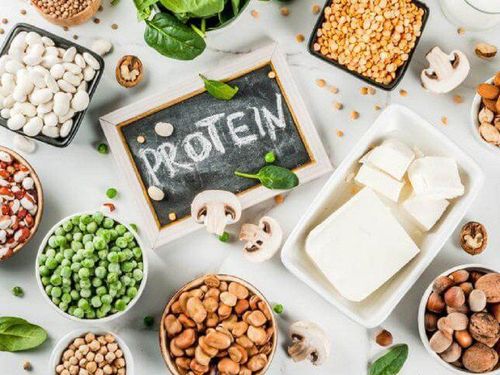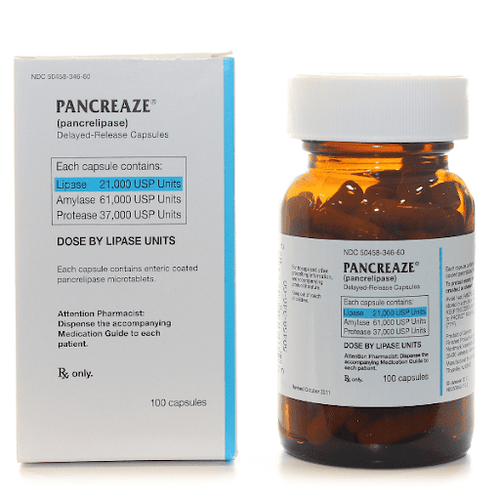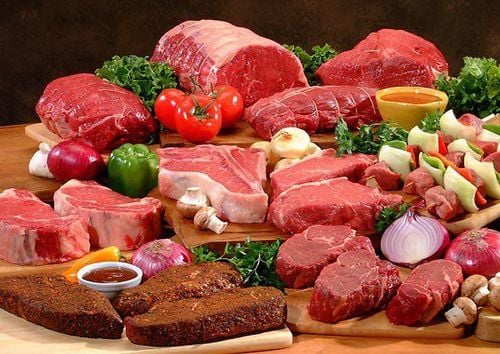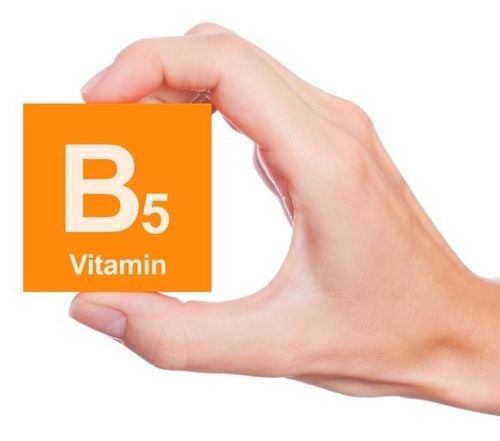This is an automatically translated article.
Protein helps your body perform a number of important functions and helps you maintain muscle mass. When you think of protein, you probably think of steak or chicken, but eating plants is also rich in protein. So does eating plants meet protein needs? Remember that protein content can vary depending on how you prepare each vegetable, and it's important to include healthy sources of protein in your diet each day.1. Importance of plant protein
Protein is everywhere, involved in almost every cell and process in our bodies. From rebuilding tissues and muscles, to hormone production, to immune health, to enzymes, to digestive health, to providing a source of energy and to providing cellular structure to hair, nail, and skin growth.. has always been regarded as the key that opens the way.In recent years, plant-based dietary patterns have become increasingly popular, with numerous documents demonstrating significant associated health benefits. But there are also many questions that people who eat only plants, how do they get protein? The answer is a matter of combining proteins: a protein that contains all nine essential amino acids is called a complete protein, or sometimes a high-quality protein. If a protein has very little of one or more essential amino acids, it is called an incomplete protein. Most (but not all) plant-based proteins are incomplete. To form a complete protein, it is necessary to combine foods that can make up the missing essential amino acids. These are called complementary proteins.
When we consume protein, it is broken down into individual amino acids in the digestive tract and stored in an amino acid 'pool'. The amino acids are then taken from the tank and assembled together into new proteins. The entire group of amino acids is exchanged three to four times per day. As long as there's a constant supply of amino acids into the tank (some from the diet, some from protein biosynthesis), we're all good.
Our daily protein needs are calculated based on body weight. The standard formula is 0.8g of protein per kilogram of body weight. For example, if a person weighs 60kg, the amount of protein he needs per day is: 60kg x 0.8 = 48g protein.
If you are eating a strict vegan diet, the recommendation is to gain a maximum of 0.9g per kilogram of body weight because some plant-based proteins are not used as efficiently by the body as can be. animal origin. That means the same 60kg person would need 54g of protein per day on a strict vegan diet.
2. 19 Protein-rich plants
Are you vegan and worried that you don't know if you're getting enough protein your body needs each day? Here are some suggestions for you, but keep in mind that protein content can vary depending on how you prepare each vegetable. The following values match the cooking method specified for each food.2.1. Tofu, edamame and tempeh Soy products are among the richest sources of protein in a plant-based diet. Protein content will vary depending on how the soybeans are prepared:
Firm tofu (curd soybeans) contains about 10 g protein per 1/2 cup Edamame beans (immature soybeans) contain 8.5 g protein per serving 1/2 cup Tempeh contains about 15 g of protein per 1/2 cup Tofu is prepared in such a way that it can be a versatile addition to every meal.
People can try tofu, as a meat substitute, in their favorite sandwich or soup. Tofu is also a popular meat substitute in some dishes, such as kung pao chicken and sweet and sour chicken.
These soy products also contain good levels of calcium and iron, making them a healthy alternative to dairy products.
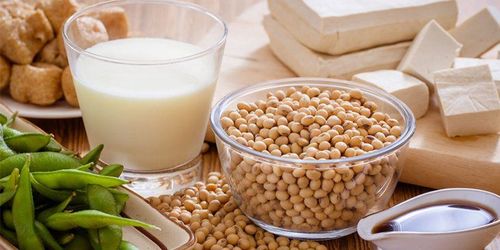
Đậu nành là loại thực vật giàu protein, phù hợp cho người ăn chay
Cooked lentils contain 8.84 g of protein per 1/2 cup.
Lentils are a great source of protein to add to your lunch or dinner. They can be added to stews, curries, salads or rice to provide an extra dose of protein.
Note: Braised lentils should only cook for 15 minutes
2.3. Chickpeas Cooked chickpeas (also known as garbanzo beans) are high in protein, containing about 7.25g per 1/2 cup.
Chickpeas can be eaten hot or cold, and are very versatile with many recipes available online. For example, they can be added to stews and curries, or will be seasoned with paprika and baked in the oven.
A person can add hummus, made from chickpea flour, to a sandwich for a healthy, protein-rich butter substitute.
2.4. Peanuts Peanuts are high in protein, packed with healthy fats, and may improve heart health. They contain about 20.5 g of protein per 1/2 cup.
Peanut butter is also very high in protein, at just 3.6g a tablespoon, making peanut butter sandwiches a healthy complete protein snack.
2.5. Wild Rice Wild rice contains about 1.5 times more protein than other types of long grain rice, including brown rice and basmati.
One cooked cup (240ml) will provide about 7 grams of protein, in addition to a good amount of fiber, manganese, magnesium, copper, phosphorus and B vitamins.
Unlike white rice, wild rice does not have the bran removed. This is great from a nutritional perspective, because bran contains fiber and many vitamins and minerals.
However, this raises concerns about arsenic, which can accumulate in the bran of rice plants grown in contaminated areas.
Arsenic is a toxic trace element that has the potential to cause various health problems, especially when ingested regularly over long periods of time.
Washing wild rice before cooking and using plenty of water to boil can reduce arsenic content by up to 57%
2.6. Hemp Seeds Hemp seeds are derived from the Cannabis sativa plant, which is famous for being in the same family as the cannabis plant. But hemp seeds contain only small amounts of THC, the compound that produces the drug-like effects of marijuana.
Although not as well known as other seeds, hemp seeds contain 10 grams of complete, easily digestible protein per ounce (28 grams). This is 50% more than chia and flax seeds
Hemp seeds also contain trace amounts of magnesium, iron, calcium, zinc and selenium. Furthermore, it is a good source of omega-3 and omega-6 fatty acids in a ratio considered optimal for human health.
Interestingly, some studies show that the type of fat found in hemp seeds can help reduce inflammation, as well as reduce symptoms of PMS, menopause and certain skin conditions
Do you You can add hemp seeds to your diet by sprinkling some in your morning smoothies or muesli. It can also be used in homemade salad dressings or protein bars.
2.7. Almonds Almonds provide 16.5 g of protein per 1/2 cup. They also provide a good dose of vitamin E for skin and eyes, and are also a good source of healthy fats.
To get the most nutrients from these nuts you should eat them while they are still in the shell.
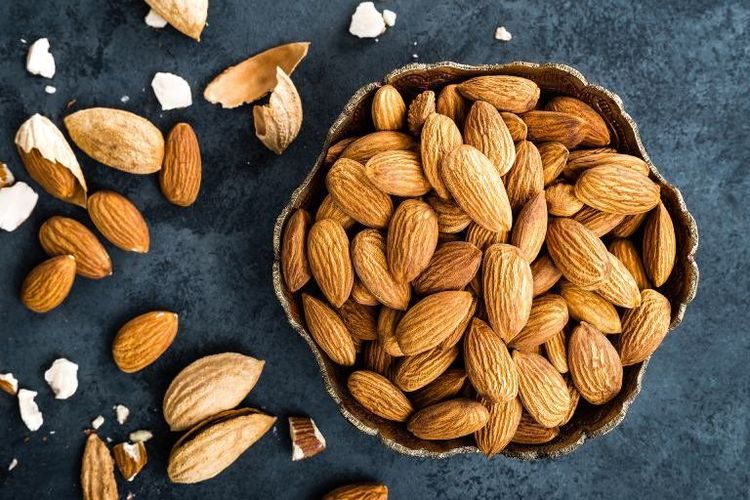
Hạnh nhân là một trong những loại thực phẩm giàu dinh dưỡng, bao gồm cả protein
Spirulina is commercially available in abundance, either as a powder or as a dietary supplement. It is also added to water, smoothies or juices. A person can also sprinkle it on salads or snacks to boost their protein content.
2.9. Quinoa is a high-protein grain that is a complete protein. Cooked quinoa contains 8 g of protein per cup.
This nut is also rich in other nutrients, including magnesium, iron, fiber, and manganese.
Quinoa can complement pasta in soups and stews, but cook time should be within 15 minutes. It can be sprinkled on salads or eaten as a main course.
2.10. Mycoprotein Mycoprotein is a fungus-based protein. Mycoprotein products contain about 13 g of protein in each 1/2-cup serving.
Products with mycoprotein are often marketed as a meat substitute and are available in forms such as nuggets or “chicken” cutlets. However, many of these products contain egg whites, so people need to be sure to check the label.
A very small number of people are allergic to the fungus Fusarium venenatum, the fungus that produces a brand of mycoprotein known as Quorn. People with a history of mushroom allergies or allergies to many foods may want to consider another protein source.
2.11. Chia seeds are a low-calorie food rich in fiber and Omega-3 fatty acids that are good for your heart. Chia seeds are a complete protein source containing 2 g of protein per tablespoon, so they are undeniably considered a superfood.
Try adding chia seeds to smoothies, then sprinkling them over plant-based yogurt or soaking them in water or almond milk to make pudding.
Chia seeds are available in some supermarkets, grocery stores or online.
2.12. Rice with beans and lentils Rice and beans alone are incomplete sources of protein. Eaten together, this classic meal will likely provide 7g of protein per cup.
Try rice and beans as an accompaniment, or mix rice, beans and hummus together then spread on Ezekiel bread, made with sprouted grains, for a savory and high-protein meal.
2.13. Potatoes A large baked potato provides 8g of protein per serving. Potatoes are also packed with other nutrients like potassium and vitamin C.
Add 2 tablespoons of hummus for a healthier-tasting snack than buttered potatoes and increase the protein content. Two tablespoons of hummus contain about 3 grams of protein.
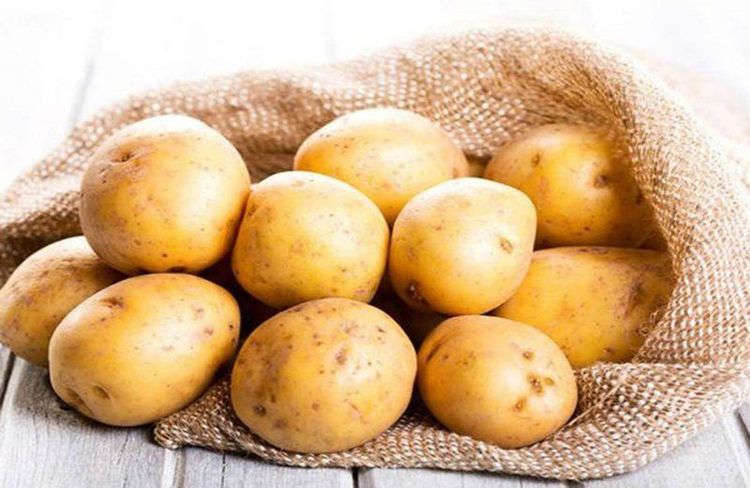
Thực đơn ăn chay của bạn sẽ được cung cấp đầy đủ protein nếu bạn bổ sung khoai tây
A single, medium stalk of broccoli contains about 4 g of protein Kale provides about 2 g of protein per cup 5 medium mushrooms provide 3 g of protein Try a green salad with some quinoa Sprinkle on top for a protein-rich meal.
2.15. Seitan Seitan is a complete protein made by mixing wheat gluten with various spices. The high wheat content means that people with celiac disease or gluten intolerance should avoid it. For others, it can be a healthy protein-rich meat substitute.
When cooked in soy sauce, which is rich in the amino acid lysine, seitan becomes a complete protein source providing about 21g per 1/3 cup.
2.16. Ezekiel Bread Ezekiel bread is a very nutritious alternative to traditional bread. It is also made from barley, wheat, lentils, millet, and has been spelled. Ezekiel bread is a great choice for bread lovers and wants a more nutritious way to eat toast or bread.
Ezekiel bread provides about 4g of protein per slice. Get even more protein by toasting Ezekiel bread and spreading it with peanuts or almond butter.
2.17. Avocado An average avocado contains 4.02 grams of protein
The nutrition and benefits of avocados for your health need not be overstated. It is ranked as a super fruit which is enough to say the great benefits it gives you.
Instead of making a simple smoothie, you can make it into ice cream, pudding... to change the taste.
2.18. Asparagus One cup of boiled asparagus contains about 4.32 grams of protein.
Try making asparagus grilled or steamed instead of the usual stir-fry or you can wrap them with bacon for extra protein for non-vegetarians.
2.19. Nutritional yeast Nutritional yeast is a strain of inactivated Saccharomyces cerevisiae yeast, commercially sold as a yellow powder or flake.
It has a cheese flavor, making it a popular ingredient in dishes like mashed potatoes and tofu.
Nutritional yeast can also be sprinkled on top of pasta dishes or even enjoyed as a savory coating on popcorn.
This complete plant-based protein source provides your body with 14 grams of protein and 7 grams of fiber per ounce (28 grams)
Fortified nutritional yeast is also a great source of zinc, magnesium, copper, manganese and all All B vitamins, including B12, however, are uncommon and do not rely on nutritional yeast not fortified as a source of vitamin B12.
Animal products, such as meat, eggs and dairy are naturally high in protein, which are essential nutrients made up of amino acids. This makes it easier for people who consume animal products to meet their daily protein needs.
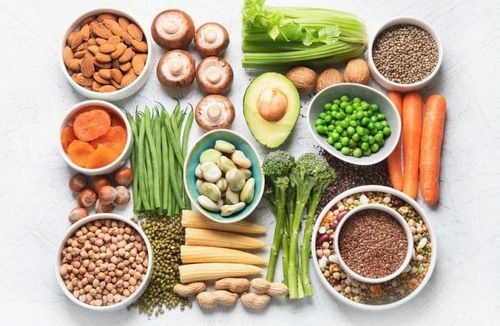
Nếu đang ăn chay, bạn nên có một thực đơn đa dạng để có đủ dinh dưỡng
A person following a vegan or vegetarian diet should eat a diet that includes a variety of plant-based foods to get all the essential amino acids. This includes protein-rich foods including tofu, tempeh, lentils, nuts, seeds, and quinoa.
Please dial HOTLINE for more information or register for an appointment HERE. Download MyVinmec app to make appointments faster and to manage your bookings easily.
Reference sources: healthline.com, helloglow.com



